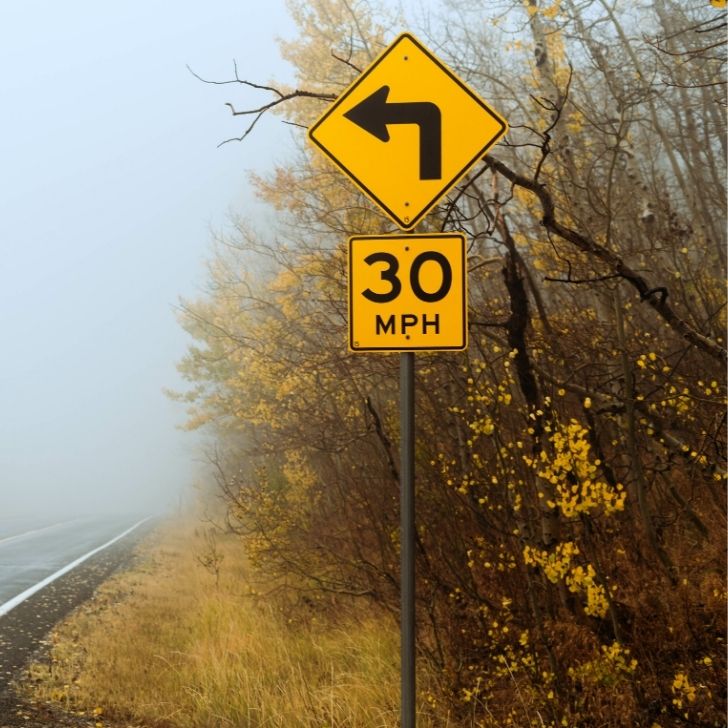What to Consider When Shopping for Traffic Signs
Having quality traffic signs in your work zone is essential to communicate as quickly and efficiently with drivers and increase overall safety for workers. Traffic cones and barricades contribute significantly to indicating an area where roadwork is being done. However, these tools can’t accurately convey directions to oncoming traffic or indicate the nature of the project. That is why it is important to consider all available options and the benefits of each when shopping for traffic signs for your unique project.
Type of Signs Being Purchased
From stop, yield, and pedestrian paddles to arrow boards and roadwork markings, there are a plethora of different signs that could be used near a job site. Each of these models communicates a different message to the drivers passing by them. Choosing the right traffic safety signs is vital to controlling traffic in the proper ways.
You should always have a clear understanding of what signs you’re going to need before you begin shopping for them. Most people are familiar with common road symbol signs, but you can always consult the U.S. Department of Transportation's Manual on Uniform Traffic Control Devices for a thorough guide. It is suggested that all road workers have at a minimum signs that indicate work ahead, flagger, lane closure, stop, and slow signs available for use at any given time. It is recommended to always check first with your state or provincial regulations when using traffic signs on roadways.
Every state has their own guidelines for types of signs, reflectivity, usage, and placement in construction areas and work zones. Be sure to follow your state or provincial regulations when using traffic signs on roadways.
Degree of Desired Retroreflectivity
You will also need to consider what level of retroreflectivity you will need for a particular job. Retroreflectivity is a type of reflection that bounces light directly back at its source, and is ideal for traffic safety applications because it provides the optimal light direction for motorists. The type of retroreflective material on a sign’s surface will determine how much light will bounce off of it when exposed to headlight beams.
Retroreflectivity is key to making traffic signs more noticeable and legible to passing drivers and increases the likelihood that they will react according to the sign's message. There are three common grades of retroreflectivity that are used for traffic safety products. Consider the placement and speed of drivers as you look at all available options:
- Engineer Grade: Also referred to as Types I, II, and III, this type of sign sheeting is made with enclosed lens reflective material and is commonly used for commercial or informational signage that is non-critical, including parking signs. The nighttime visibility of Engineer Grade is about 500 feet away.
- High Intensity Prismatic Grade: Known as Types IV, V, and VI, this is made with an encapsulated lens material and is used for highway signs, construction zone devices, and delineators. These signs capture low amounts of light and amplify it so it can be seen from about 1000 feet away in the nighttime.
- Diamond Grade: Known as Types VII, VIII, and IX, this sheeting provides the highest amount of reflectivity using a prismatic lens material on signs. This type is generally used on faster interstate highways and very dark work zones, but can benefit any area and application due to its high performance specifications. Signs with Diamond Grade sheeting can be seen from even further away in the nighttime—approximately 1,500 feet.
Necessary Size To Be Visible
In addition to retro reflectivity, another thing to consider when shopping for traffic signs is the size the sign. To be effective, drivers need to be able to legibly read the traffic notification. While the right level of reflectivity will ensure that your signs are noticed in any lighting, the size will make them easier to read depending on the speed of the drivers in your work zone.
Signs that are too small can be difficult to read and can become a distraction for drivers as they struggle to read them at speed. Likewise, signs that are too big run the risk of blocking things from view like traffic ahead or other signs with critical instructions. As a general rule, larger signs are better for faster moving roads such as highways, and standard 18- to 30-inch signs are good for normal, lower traffic conditions.
Count on Traffic Safety Warehouse for All Your Sign Needs
When you are shopping for traffic signs, you can count on the cultivated selection and high-quality products at Traffic Safety Warehouse. We work to offer you the very best from top brands at low prices and fast shipping. Contact us today to request a quote for traffic signs and safety supplies for your next project.


